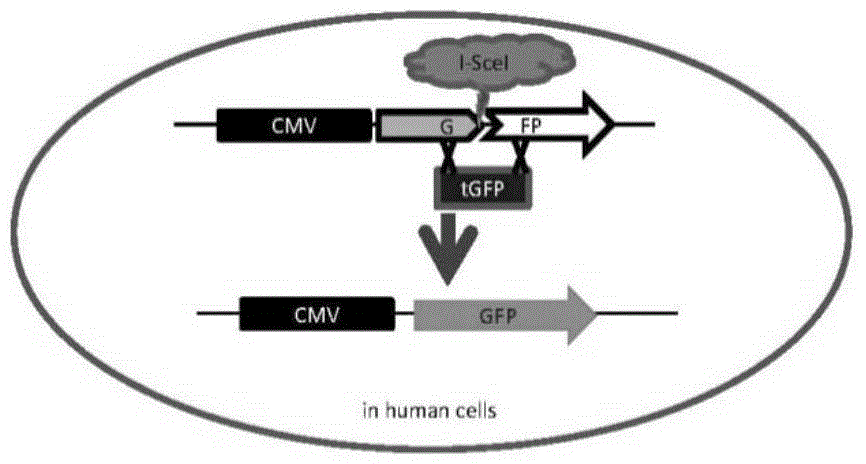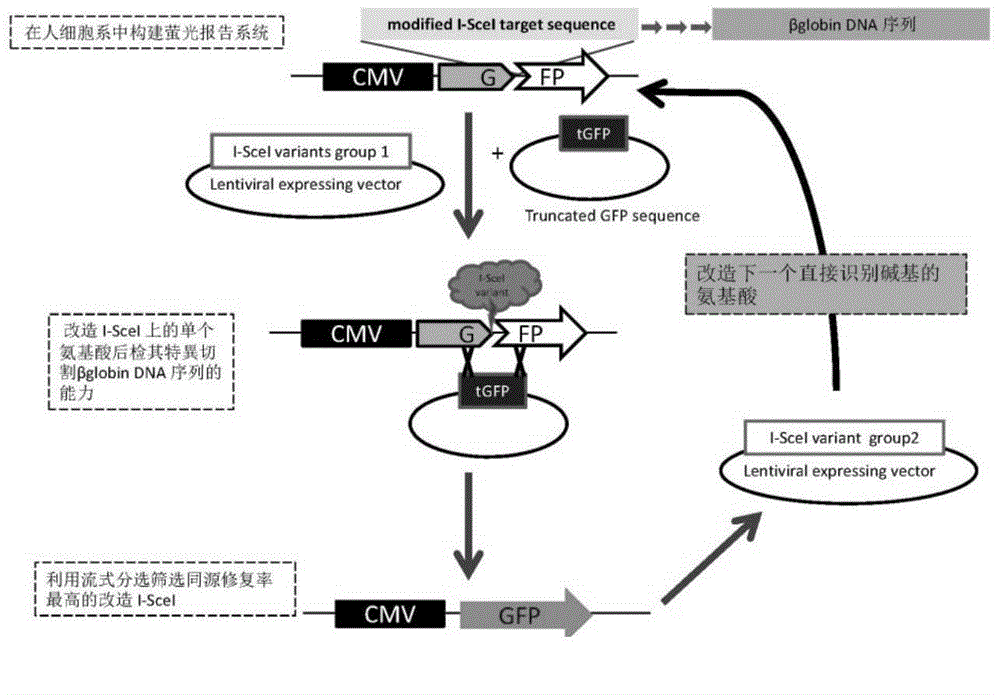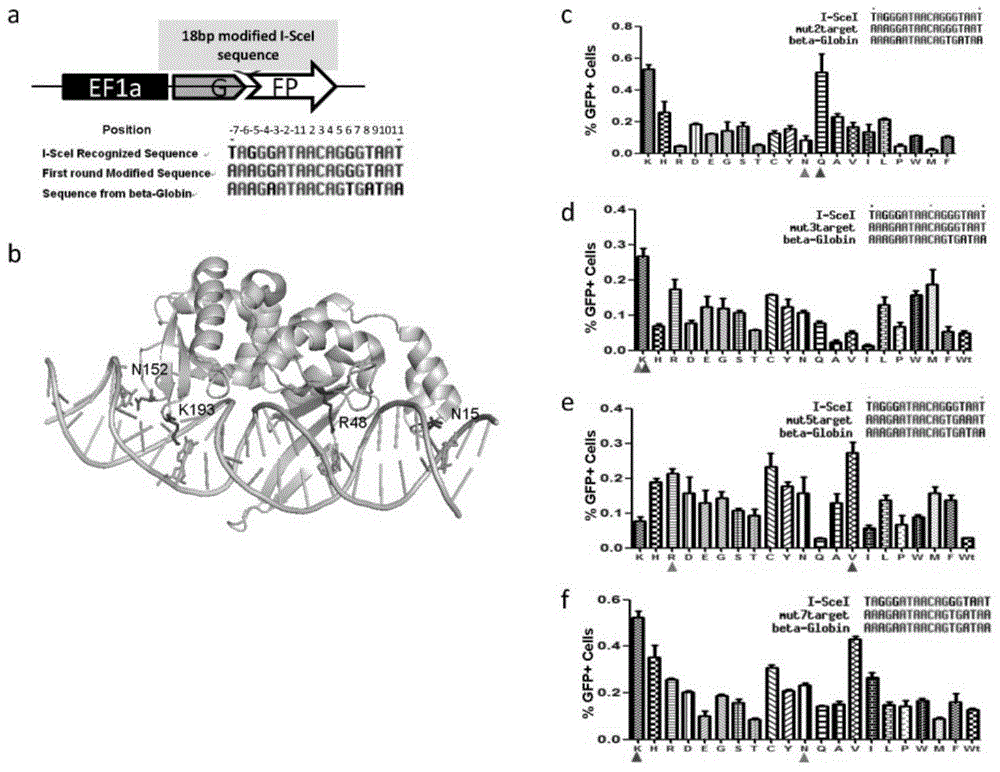Chimeric nuclease for specific recognition and repair of beta thalassemia beta-globin gene
An amino acid and nucleic acid molecule technology, applied in the field of genetic engineering, which can solve problems such as obstacles and off-targets
- Summary
- Abstract
- Description
- Claims
- Application Information
AI Technical Summary
Problems solved by technology
Method used
Image
Examples
Embodiment 1
[0037] Example 1. Preparation of a chimeric nuclease that specifically recognizes and repairs the beta-thalassemia beta-globin gene
[0038] 1. Transformation of homing endonuclease I-SceI
[0039] The homing endonuclease I-SceI will use a special fluorescent reporter system in human cells to screen the DNA sequence that specifically recognizes the DNA sequence adjacent to the β-thalassemia mutation site ( figure 1 ). From the current structure of I-SceI, it can be found that some amino acids in I-SceI are in direct contact with the DNA sequence. By gradually changing the sequence of bases, and then screening these directly contacted amino acids, and finding the most specific new combination amino acid binding site (see figure 2 ).
[0040] During the recognition process of I-SceI and DNA sequence, ATAAC in the DNA sequence is an important part of protein cleavage. When these bases are changed, the cleavage efficiency will be significantly reduced, which can be screened by...
Embodiment 2
[0055] Embodiment 2, functional verification of chimeric nuclease TALE-I-SceI
[0056] 1. Improving the efficiency of gene targeting in the human genome
[0057] The modified fusion protein has the effect of cutting genomic DNA. In the absence of a donor, the DSB will be repaired by the NEHJ repair method in vivo, and indels or mutations will be generated at the cutting site.
PUM
 Login to View More
Login to View More Abstract
Description
Claims
Application Information
 Login to View More
Login to View More - R&D
- Intellectual Property
- Life Sciences
- Materials
- Tech Scout
- Unparalleled Data Quality
- Higher Quality Content
- 60% Fewer Hallucinations
Browse by: Latest US Patents, China's latest patents, Technical Efficacy Thesaurus, Application Domain, Technology Topic, Popular Technical Reports.
© 2025 PatSnap. All rights reserved.Legal|Privacy policy|Modern Slavery Act Transparency Statement|Sitemap|About US| Contact US: help@patsnap.com



